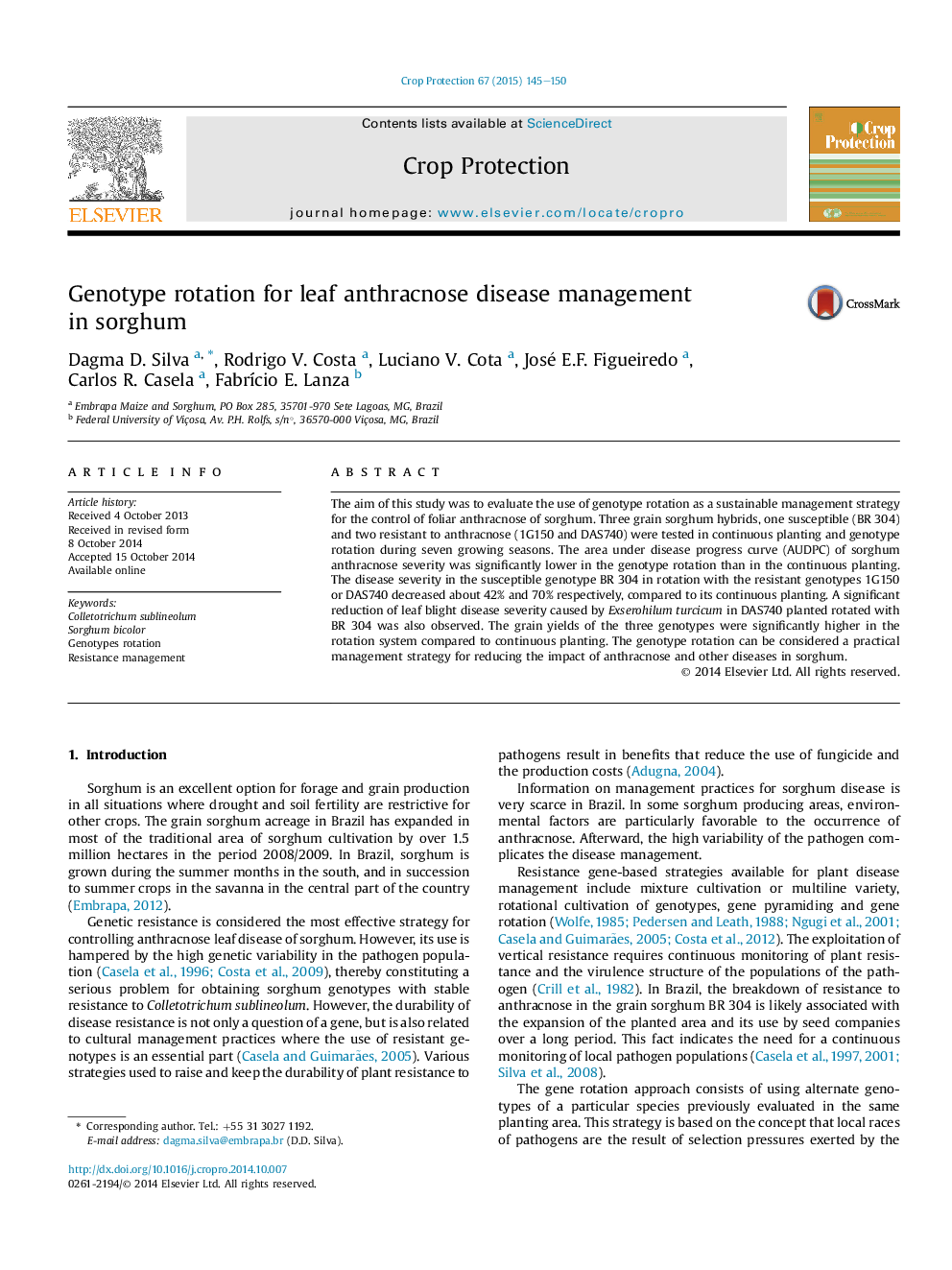| Article ID | Journal | Published Year | Pages | File Type |
|---|---|---|---|---|
| 6373561 | Crop Protection | 2015 | 6 Pages |
Abstract
The aim of this study was to evaluate the use of genotype rotation as a sustainable management strategy for the control of foliar anthracnose of sorghum. Three grain sorghum hybrids, one susceptible (BR 304) and two resistant to anthracnose (1G150 and DAS740) were tested in continuous planting and genotype rotation during seven growing seasons. The area under disease progress curve (AUDPC) of sorghum anthracnose severity was significantly lower in the genotype rotation than in the continuous planting. The disease severity in the susceptible genotype BR 304 in rotation with the resistant genotypes 1G150 or DAS740 decreased about 42% and 70% respectively, compared to its continuous planting. A significant reduction of leaf blight disease severity caused by Exserohilum turcicum in DAS740 planted rotated with BR 304 was also observed. The grain yields of the three genotypes were significantly higher in the rotation system compared to continuous planting. The genotype rotation can be considered a practical management strategy for reducing the impact of anthracnose and other diseases in sorghum.
Related Topics
Life Sciences
Agricultural and Biological Sciences
Agronomy and Crop Science
Authors
Dagma D. Silva, Rodrigo V. Costa, Luciano V. Cota, José E.F. Figueiredo, Carlos R. Casela, FabrÃcio E. Lanza,
